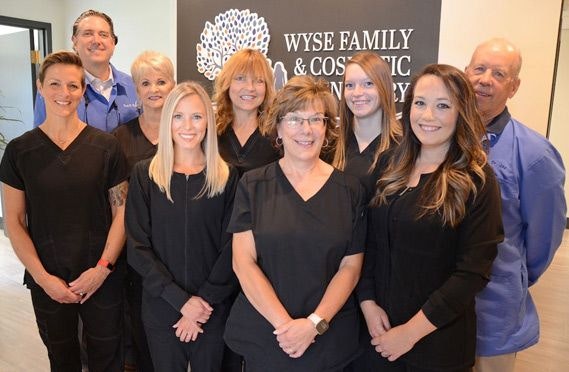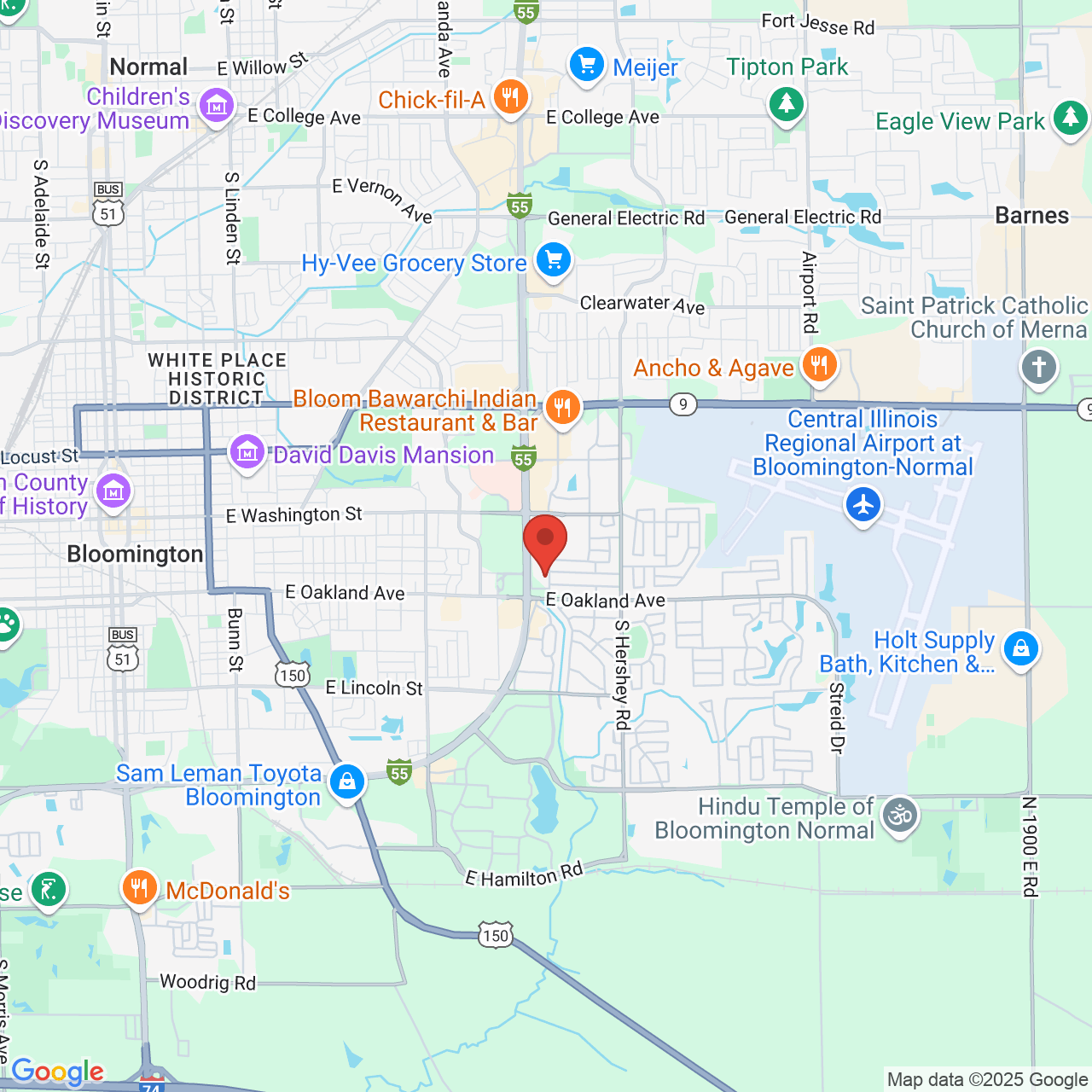Digital X-rays, Intraoral Camera and Smile Design Imaging Technology
We use digital x-rays, intraoral camera technology, and smile design imaging at our Bloomington, Illinois practice because we believe that it is important to stay up-to-date. In an industry like cosmetic dentistry, each new technological development can potentially change the way we work with smiles. If there is a new procedure that offers patients a better result with less pain than an older procedure, we want to offer it. That’s why we at Wyse Family & Cosmetic Dentistry stay current with the latest dental technologies and developments.
- Digital X-rays
- Intraoral Camera
- Smile Design
- iTero™ Digital Impressions Scanner
If you’ve ever tried to hold perfectly still in an awkward position as you bite down on an impossibly rough and tasteless little piece of plastic while wearing a lead vest, then you know that having dental x-rays taken can be uncomfortable. Luckily, technology has found a way to make x-rays easier for patients and actually create better images than what traditional machines produce. Digital x-rays, now available in Bloomington, Illinois at Wyse Family & Cosmetic Dentistry, make dental x-ray discomfort a thing of the past.
How Does the Digital X-ray System Work?
Digital x-rays use a small sensor on the end of a wire that is placed inside the patient’s mouth and moved into position according to what part of the teeth the dentist wants to x-ray. Then the x-ray is taken and immediately appears on the dentist’s computer screen. Additional digital x-rays can be taken by simply repositioning the sensor and pressing a button. The patient does not need to move, and there is no waiting for the films to develop.
Once the x-rays are taken, the dentist can enlarge the images on the computer screen, which allows both the dentist and the patient to more easily see any problems that may need attention. The images can also be saved in the computer, creating an electronic record that is easy to store, retrieve, and transfer as needed. In addition, there is up to 90 percent less radiation exposure with digital x-rays as opposed to traditional systems.
For more information on digital x-rays or other dental technologies, contact Wyse Family & Cosmetic Dentistry in Bloomington, Illinois today. We would be happy to answer any questions you may have.
iTero™ Digital Impressions Scanner
 At Wyse Family & Cosmetic Dentistry, we use the iTero™ Digital Impressions Scanner to get extremely accurate digital impressions of the tooth preparation area for your crowns, bridges, veneers and other porcelain dental work. The parallel confocal imaging of the iTero™ Digital Impressions Scanner uses laser and optical scanning to digitally capture the surface and contours of your teeth and gingival structures. With this technology, we can see 360 degree 3-D images of your teeth to ensure a perfect fit for your new dental work. In addition, once the scanning is complete, data files of your digital impressions can be reviewed with you and stored electronically for future reference.
At Wyse Family & Cosmetic Dentistry, we use the iTero™ Digital Impressions Scanner to get extremely accurate digital impressions of the tooth preparation area for your crowns, bridges, veneers and other porcelain dental work. The parallel confocal imaging of the iTero™ Digital Impressions Scanner uses laser and optical scanning to digitally capture the surface and contours of your teeth and gingival structures. With this technology, we can see 360 degree 3-D images of your teeth to ensure a perfect fit for your new dental work. In addition, once the scanning is complete, data files of your digital impressions can be reviewed with you and stored electronically for future reference.
The procedure routinely requires 3 to 5 minutes without the hassles of traditional tray and putty impressions. This means less time for you, as there is no need to wait for the traditional materials to set. This new technology also eliminates gagging that occurs with the traditional tray and putty procedure, making it more comfortable for you, and the final restorations have a more accurate fit.
To learn more about the iTero™ Digital Impressions Scanner, contact our practice in Bloomington, Illinois today.
Intraoral Camera
The best way to remedy dental problems is to catch them as early as possible, which is why regular dental checkups are recommended. But no matter how skilled the dentist is or how bright a light he uses, it can be difficult to see well inside of a patient’s mouth. Even with a magnifying mirror, it is possible to miss the often tiny indicators of developing problems. The intraoral camera, used at our Bloomington, Illinois practice, is a technological advancement that makes it possible to not only detect the smallest of details, but also show these tiny defects to the patient and record them for later reference.
How does the Intraoral Camera Work?
About the size of a pen and with a tiny lens on the end, the intraoral camera is moved around inside the patient’s mouth, capturing video images that are transmitted to the dentist’s computer. The dentist can then freeze specific shots and examine the pictures of the patient’s teeth and gums, which can more easily reveal the beginnings of cavities, gum disease, or other dental maladies. These images can be enlarged, manipulated, and stored for improved diagnoses and easy record keeping.
The intraoral camera also allows patients to see for themselves what is going on inside their mouths. Often, a dentist may see a trouble spot, such as a small section of teeth that is being neglected during brushing, but can only describe the position and condition of these teeth to the patient. With the intraoral camera, the dentist can photograph the area and show the patient exactly what the teeth look like.
To learn more about the intraoral camera, contact our practice in Bloomington, Illinois today.
Smile Design
One of the common difficulties in cosmetic dentistry is that the patient is unable to visualize the end result of a procedure until the process is finished. People generally assume that their teeth will be straighter, whiter, or have a better shape, but it is hard to know how the smile will actually look. With smile design computer imaging technology, there is no longer any mystery for our Bloomington, Illinois patients. Now the dentist can create before and after photos prior to the patient even deciding on their exact course of treatment.
How Does Smile Design Imaging Work?
First, some ordinary digital photographs are taken. The dentist may take a picture of the patient’s whole face, a close-up of the teeth, or both. Pictures might be taken from different angles, depending on the type of work to be done. Then the sophisticated smile design computer imaging program is used to virtually conduct the cosmetic enhancements that the dentist would recommend. Teeth can be added, moved, whitened, straightened, lengthened, and fixed all with a few clicks of a mouse.
When the adjustments have been made, the dentist will share the pictures with the patient, who will then be able to see the results of the smile makeover before even beginning the treatment. This often helps to dispel nervousness or inhibitions about cosmetic dentistry treatments and gives the patient something to look forward to throughout the process.
Contact Us
If you have any questions about the smile design system or would like to see a preview of the results you could achieve with dental enhancements such as teeth whitening, dental implants, porcelain veneers or Invisalign®, feel free to contact our practice. We also invite you to read patient reviews describing the level of service this technology helps us to provide.



